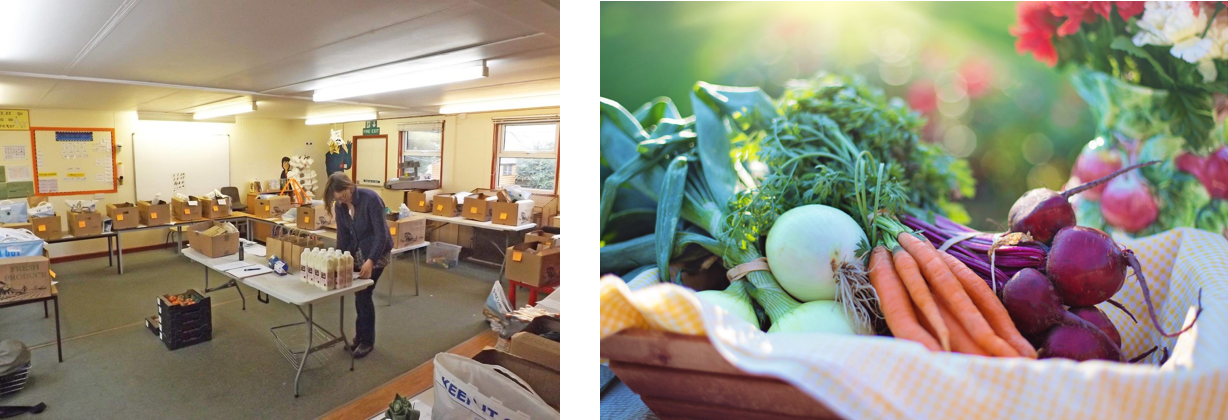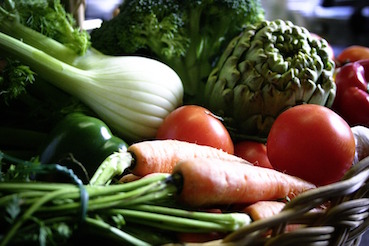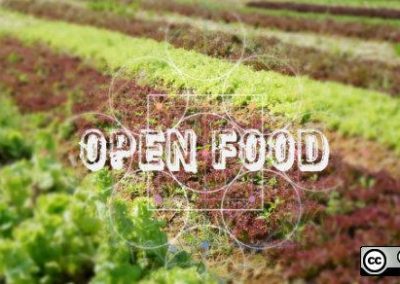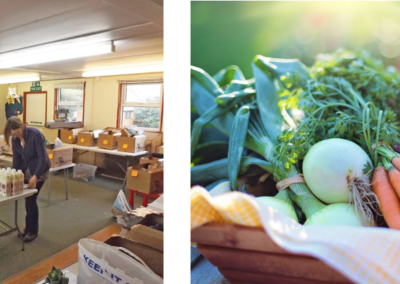Media
Making agriculture more sustainable with open source software
From Digital Social Innovation, March 2018
By Matt Stokes
Open Food Network provides open-source software to help support sustainable ecosystems for agriculture around the world. We caught up with Nick Weir from OFN UK.
Tell us about the Open Food Network. How did it all begin and what’s your mission?
Open Food Network (OFN) is a “holarchy”, a network made up of self-organised layers working to create new and better food systems around the world. We have nine core values: global commons, relationships, ecosystems, transparency, empowerment, subsidiarity, people first, constant evolution, and systemic change.
OFN was founded in Australia by Kirsten Larsen and Serenity Hill. Kirsten has a background in state government sustainability, climate and food policy, and has worked on development and implementation of food policies at state and local government levels. With the Victorian Eco-Innovation Lab at the University of Melbourne she explores the technical and social innovations which change what’s possible and which can bring healthy communities and ecosystems closer.
Serenity comes from a farming family and believes in social and economic justice and the need for systems that care for the land and people that depend on it. Having worked in government and academia, she has a belief in “regenerative agriculture”, which builds soil, is resilient to shocks, and supports happy farmers staying on the land. Serenity believes regenerative agriculture can only become the norm if supported by fair markets and supply networks, in which the basic economics support farmers to manage the land within its capacity.
In 2011, Kirsten and Serenity founded Eaterprises Australia, a social enterprise focused on transforming the way food is distributed and exchanged. OFN came out of Eaterprises Australia, as did the South East Food Hub, the Australian Food Hubs Network and the Open Food Foundation.
OFN is all about the long game, supporting a movement of people seeking alternative distribution models that can scale beyond a niche.
What are your main activities?
OFN is designed to be very flexible; through one software system, food producers, retailers and distributors anywhere can use the tools we provide.
For example, farmers, growers and producers, such as Down Farm in Devon, can choose to sell direct to food buyers and shoppers (retaining all revenue) and/or to sell through the growing network of high street shops, farmers’ markets, food hubs and food co-ops all using the same online system to distribute food direct to restaurants, schools, hospitals, caterers, homes and through a network of pick-up points.
High street shops, such as Locavore in Glasgow, can reduce the amount of produce going to waste by offering fresh vegetables online, which are harvested to order. Mail order shops can also reach other enterprises and consumers directly; Sole of Discretion in Devon, for example, provides sustainable fish to a range of clients.
The software also allows communities to set up food hubs, such as Stroudco in Gloucestershire andTamar Valley Food Hubs in Cornwall, which bring together sales from a range of local producers. Similarly, food co-ops like Bury St Edmunds in Suffolk can buy wholesale to then sell on to local shoppers.
Furthermore, farmers’ markets, such as Black Mountain in Carmarthenshire and Shipbourne in Kent, can boost their sales through new click-and-collect services. Through these services, shoppers who can’t attend the market can still buy produce by ordering in advance; producers who can’t attend the market or afford stalls can arrange for produce to be put into shoppers’ pre-prepared boxes. Producers who are at the market can then deliver pre-prepared boxes, extending the geographical reach of farmers’ markets, reducing total food miles and providing an additional source of income (delivery fees) for farmers.
Finally, the OFN software supports charities and other groups to distribute surplus food to food banks and people on low incomes.
Open Food Network’s web infrastructure is open-source. What made you decide to follow the open-source route? What challenges come with this model?
We’ve seen countless social enterprises raise money to write software to build resilient local food economies, all of which seem to address only part of a very complex and evolving opportunity. They then run out of money!
By pooling our resources and developing open-source code we can all benefit from the experience and the resources of everyone interested in building a fairer food distribution system.
One of the main issues is maintaining the quality of the code base. We have developed good communications systems so that developers all over the world can work on OFN using agile principles. We also have a very experienced and dedicated central team in Australia who test and check any code improvements before merging them to master.

Could you tell us about your business model in the UK?
We want to encourage small-scale farmers and producers to become established and grow. We also want to enable all food producers of whatever scale to network with each other to share distribution costs and infrastructure and to be able to cross-sell each others’ products. So rather than charge a user fee that is a fixed percentage of turnover through OFN, we invite users to contribute on the basis of a) what they can afford and b) the value that they feel that they are receiving from OFN.
How do you try to understand and measure the impact you’re having?
We record the number of producers, shops, buyers and orders, and make this public through a life feed on our home page. We also produce monthly reports showing the turnover of OFN shopfronts. On the qualitative side, the OFN community forum encourages conversations between OFN users and helps support sharing, learning and cooperation.
What are the biggest challenges you’ve faced so far, and how have you overcome them?
Lots of small start-ups are so focussed on the details of production that they do not have time to set up online retail and distribution systems – even when OFN makes it so easy for them!
Luckily, though, there seems to be a steady stream of students interested in working with OFN and learning the practice of short food supply chains. As a result we’ve been able to offer successful internship schemes where the farmer or food hub hosts the intern in return for them setting up their OFN shop front.
What’s next for the Open Food Network?
OFN is going global! There are OFN “instances” in seven countries, with eight more in the pipeline. We’ve received interest from another 25 countries. (You can see the full list of countries here.) We want to enable any farmer/grower in any country to set up on OFN, which is why the latest release of the software also enables multilingual functionality. We are also really keen to move into less developed countries, so we want to set up a single global instance of OFN which would mean poorer countries don’t have to invest in setting up and deploying servers. We believe that by scaling globally we will be able to make steps towards our ultimate vision of enabling new and better food systems around the world.



